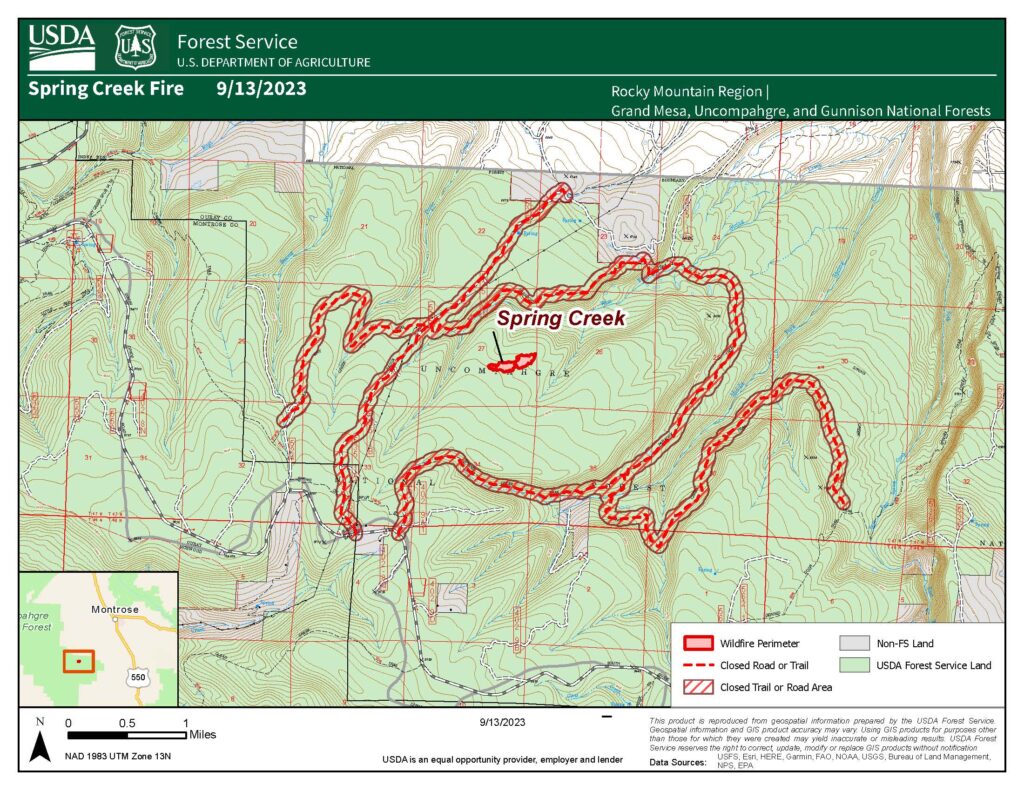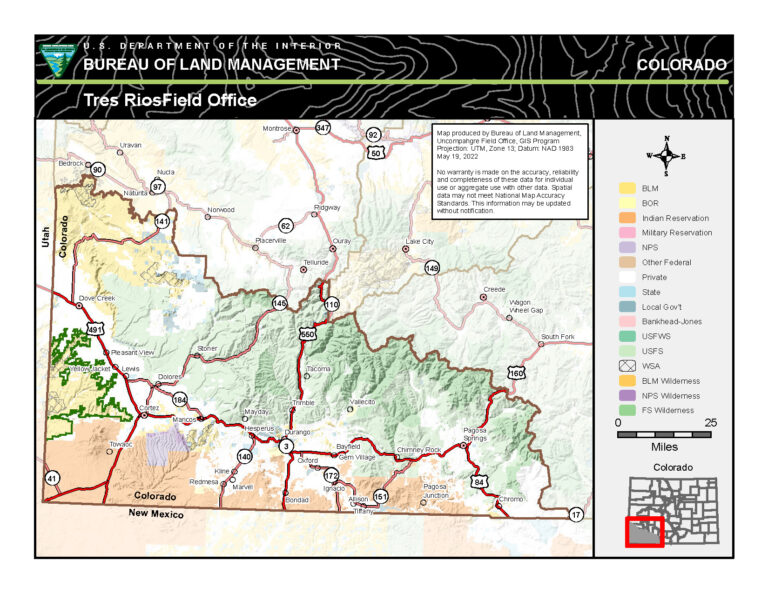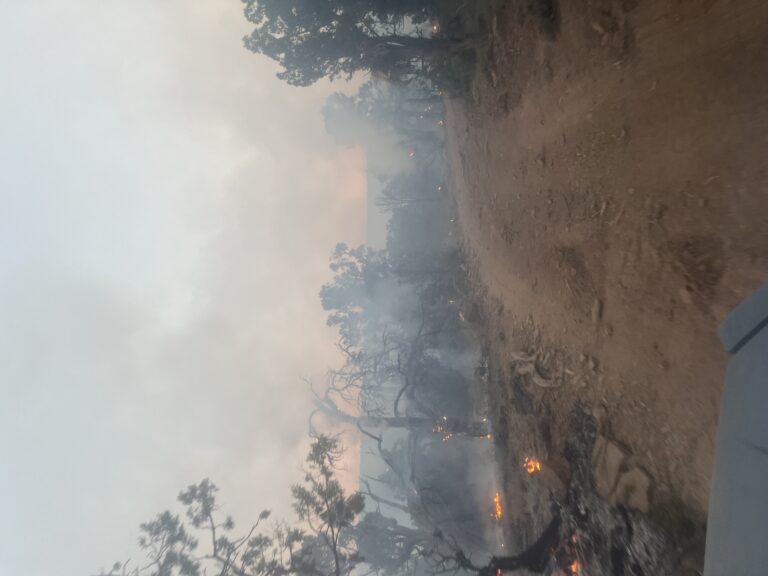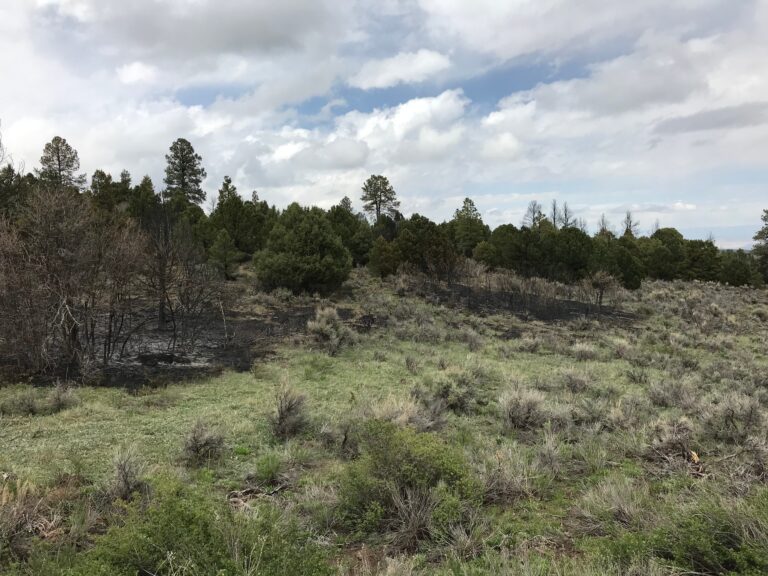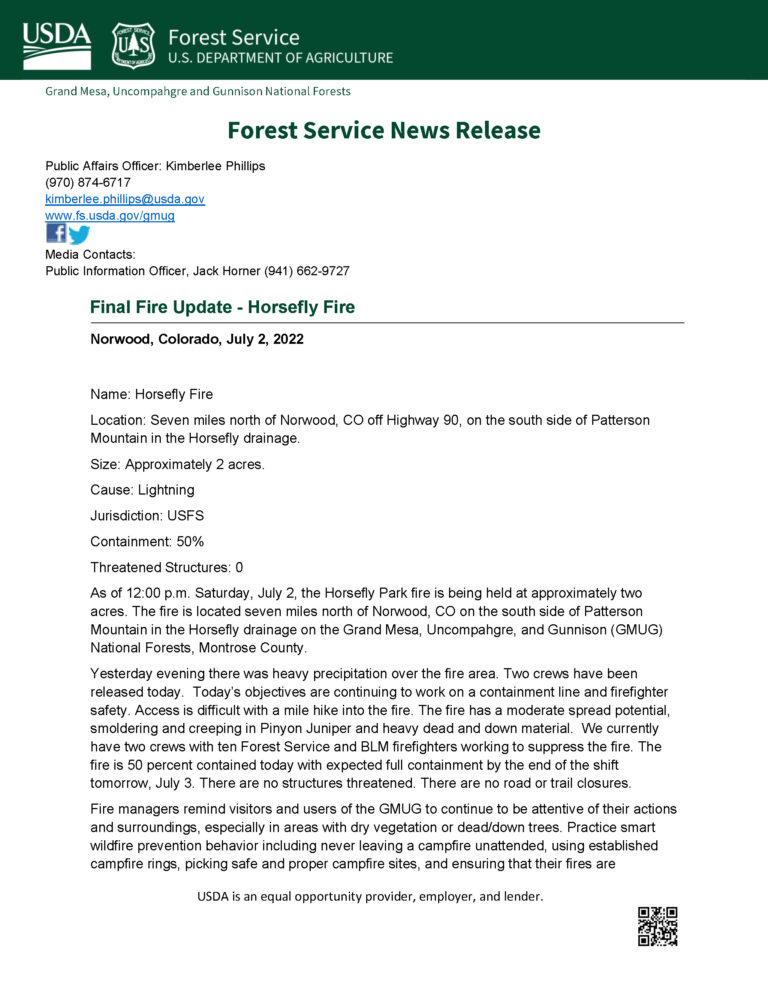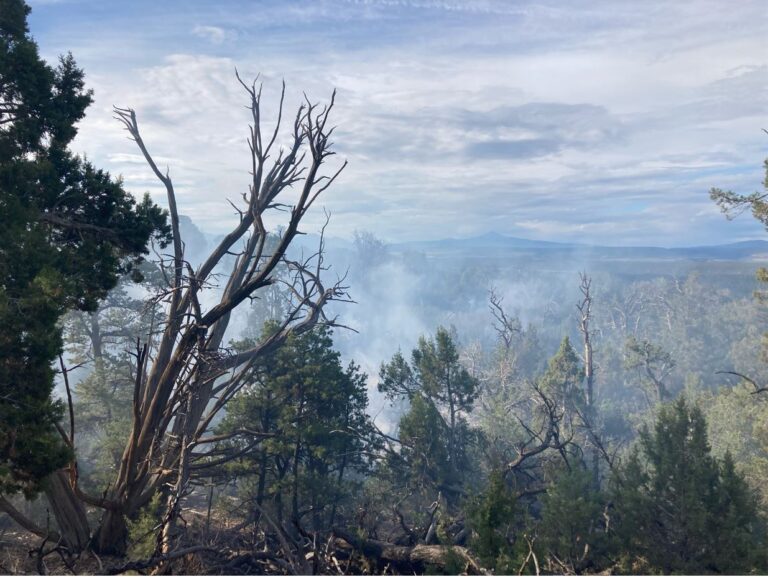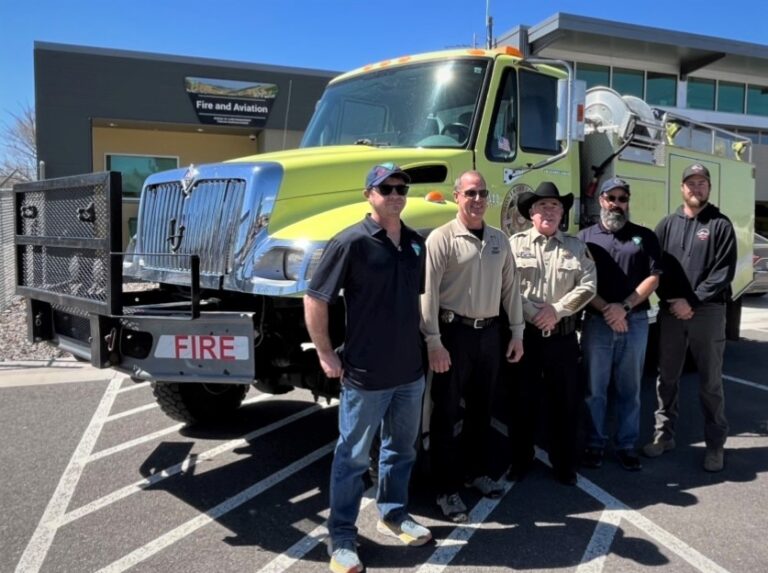Wednesday, Oct. 11, 2023
The #CowCreekRX is complete for the 2023 fall season.
Firefighters have been regularly patrolling the prescribed burn. Tree stumps, logs and woody material will continue to smolder, producing smoke.
Smoke will be visible over the next several weeks until the area receives precipitation.
For more information on how prescribed fire smoke may affect your health, please visit https://www.colorado.gov/pacific/cdphe/wood-smoke-and-health.
For Immediate Release: Cow Creek Prescribed Fire Project Announced
Fire Management Officials from the Grand Mesa, Uncompahgre and Gunnison (#GMUG) National Forests’ Grand Valley Ranger District plan to conduct the Cow Creek prescribed burn this fall. The vegetation treatments could occur from September through October, depending upon weather and appropriate ground and vegetation conditions. Prescribed burning is a versatile forest management tool designed to re-introduce fire into the ecosystem to promote and regenerate healthy trees and habitat conditions while improving habitat for a variety of wildlife.
The project area is approximately 9 miles east of Gateway, Colorado and 25 miles southwest of Grand Junction, Colorado. If conditions are appropriate, about 7,000 acres with the potential of up to 15,000 acres are planned to be burned over multiple days, reducing the threat of catastrophic wildfire and improving wildlife habitat. The project area includes Cow Creek, Calamity Creek and Indian Creek.
Before conducting a prescribed burn, extensive planning establishes proper parameters such as weather, fuel conditions, smoke dispersion, staffing and other agency coordination. Coordinating efforts occur with local landowners, protection partners and other cooperating agencies to ensure the burn is conducted safely. The prescribed burns will be accomplished using joint-agency fire resources utilizing aerial and hand ignitions and will be closely monitored to ensure that they remain within the designated boundaries.
The safety of firefighters and the public are the most important factors considered when planning a prescribed burn. Trained fire managers conduct prescribed burns with a strong understanding of fire behavior and years of on-the-ground experience. These prescribed fire projects will only be implemented when pre-identified firefighting resources are available to support safe operations and specific environmental conditions are met (e.g., wind speed, relative humidity, smoke dispersion). Ignitions will occur using ground and aerial techniques. Fire managers will monitor and staff the fire until it is deemed secure and patrol the prescribed fire until it is declared out.
Smoke from the prescribed fire will be managed to have minimal impact on neighboring communities. The prescribed fire will aid in decreasing longer duration, unpredictable and hazardous volumes of smoke from wildfires. Fire managers have obtained smoke permits from the State of Colorado and will comply with Colorado State air quality regulations. For more information on how prescribed fire smoke may affect your health, please visit https://www.colorado.gov/pacific/cdphe/wood-smoke-and-health.
Dispersed recreation in the prescribed fire project areas may be impacted. Staff will be making personal contact with recreationists regarding any temporary closures. Signs will be placed on adjacent roads, notifying the public of the project areas as necessary.
The public is reminded not to call 911 or emergency services if smoke is visible in specific burn areas. Prescribed burn areas and potential dates will be posted on the GMUG Fire Info Facebook page.
For information and updates on current fire restrictions, conditions, and recreation opportunities on the Grand Mesa, Uncompahgre and Gunnison (GMUG) National Forests, visit the forest website. Connect with us on social media (Twitter and Facebook).
For more information on how prescribed burning and pile burning smoke may affect your health, please visit https://www.colorado.gov/pacific/cdphe/wood-smoke-and-health.
